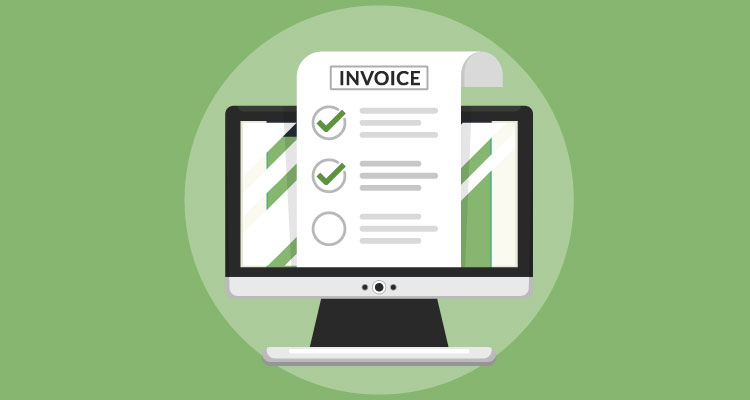As you set up your business, you will need to figure out an invoice and payments policy. Choosing the right invoicing terms is a big deal since it governs how you will be paid.
You don’t want to just “set it and forget it” when it comes to your invoicing. And you don’t want to be arbitrary in how you set things up. As a result, it’s important to carefully think through the terms and set the best invoicing terms for your business.
Table of Contents
ToggleHow Invoicing Terms Impact Your Business
Invoicing terms are important because they have a big impact on your business. You might think that things are pretty straightforward: send the invoice for the work and get paid.
However, that’s not often how it works. Clients look at due dates. Your cash flow will be impacted by the invoicing terms. If a client thinks they have 30 days to pay when you want payment in two weeks, that can mean no access to funds when you need them.
On top of that, the flow of the project can be interrupted. If you are working on a large project and work is determined by when you get paid at each stage, you can fall behind as you wait for payment. Coordinating your invoicing terms so that you are paid in a way that keeps things moving is important.
The way you handle your invoicing can make a difference in your client relationships as well. When there aren’t clear terms and you are constantly on pins and needles waiting for payment, it can strain your client relationship.
Finally, invoicing terms need to be consistent for maximum success in your business. It can be difficult to try to remember the terms extended to each client. It’s much easier if you can point to a policy that reflects consistency for your business.
In some cases, this might not work if your client is a big company that already has its own invoicing policies. However, if you have the chance to set the terms, make sure they follow a pattern with your own business that results in the best payment results for you, with due consideration for the individual client needs.
Consider Payment Terms
Your first step is to look at your payment terms. Have you agreed on payment terms with the client? This might be done through email, or by setting a formalized contract.
If you have the chance to set invoicing terms in your initial interactions, it helps to make sure that they are in keeping with your expectations for the client (or your business policies).
Find out first what the client’s normal payment habits are. Is it possible to work with your own invoicing and payment schedule?
I like to invoice twice a month, especially for clients that I do a significant amount of regular work for. In most cases, this policy has not been problematic. However, I do have some agency clients who pay once a month. They require invoices to be sent by specific days for payment.
For the most part, I invoice on the 15 of the month and the last day of the month. It has worked well for me. However, if a company has its own payment terms, and we agree on them, I make an exception. Keeping track of this information is important as you work to set the right invoicing terms.
How Soon Do You Want Payment?
One thing to take into consideration is the idea that many clients pay late, no matter what. Sometimes you see delays of one week or two weeks — no matter the due date on the invoice.
When setting up a new relationship and choosing invoicing terms, it can help to have a shorter timeframe for payments. Verify that the client’s company doesn’t have its own payment terms before moving forward, though. Once you know the clients level of flexibility, you can choose a timeframe that fits you.
If you operate on the principle that clients will pay late regardless, shorter due dates for payments can make sense. Rather than go with Net-30, consider making due dates within 14 or 15 days. That shorter timeframe means that clients, even if they pay a week or two late, are still paying within 30 days.
The longer the due date window, the longer your potential for late payments and the need to chase down invoices. After all, if a client sees that something isn’t due for 30 days, they are likely to put it on the back burner and forget about it.
Create an invoicing policy that adds a little urgency and you have a better chance of being paid on time.
How Reliable is the Client?
Don’t forget to consider client reliability when setting invoicing terms. It’s possible to do a little background check on the client ahead of time. Do you know the client?
Do you know the client? Are they well-regarded in the industry? Can you get references to follow up with? Verifying this information can help you figure out invoicing terms. If you aren’t sure of the client, extending longer terms doesn’t make a lot of sense – no matter your regular policies.
When setting terms for a new client that might be unreliable, consider setting a payment term of a week to start. This will give you an idea of where they stand. Plus, it will give you an excuse to follow up faster for payment if the client turns out to be somewhat unreliable.
Most of my clients are those I know and find reputable, so I am comfortable with the two-week invoicing timeframe. However, there have been times in the past when I’ve invoiced weekly because I was unsure of a client. Carefully think about reliability as you’re setting terms.
Should You Include a Late Payment Fee?
One way to get paid faster is to include late payment consequences in your invoicing terms. Consider adding a fee to late-paid invoices. Much of the time, these fees kick in when an invoice is paid at least 30 days late.
If you do add a late payment fee, consider having a plan in place to follow up with the client before the fee kicks in. So, if you charge a fee at 30 days late, and your due date is 15 days, make sure you send a reminder on day 16. Let the client know that the invoice was due, and that there will be a late fee in another 15 days.
Be Clear About Your Invoicing Terms
No matter what you decide to do with your invoicing, make sure the terms are clear. Terms should be agreed upon beforehand. Let clients know your invoicing policy, including when you expect to be paid and any late fees that you charge.
The terms should be included in your work contract or listed out clearly in an email. Either way, your client should agree to them before you proceed.
Once you have an agreement, be sure to have all the information readily available on the invoice. Clearly state the terms and the due date. That way, the client is reminded of the terms each time you send an invoice. No one likes to hunt for that information. Create a template and provide the information every time.
With a little planning, it’s possible to choose invoicing terms that work for you, and ensure that you get paid when you need the money.















